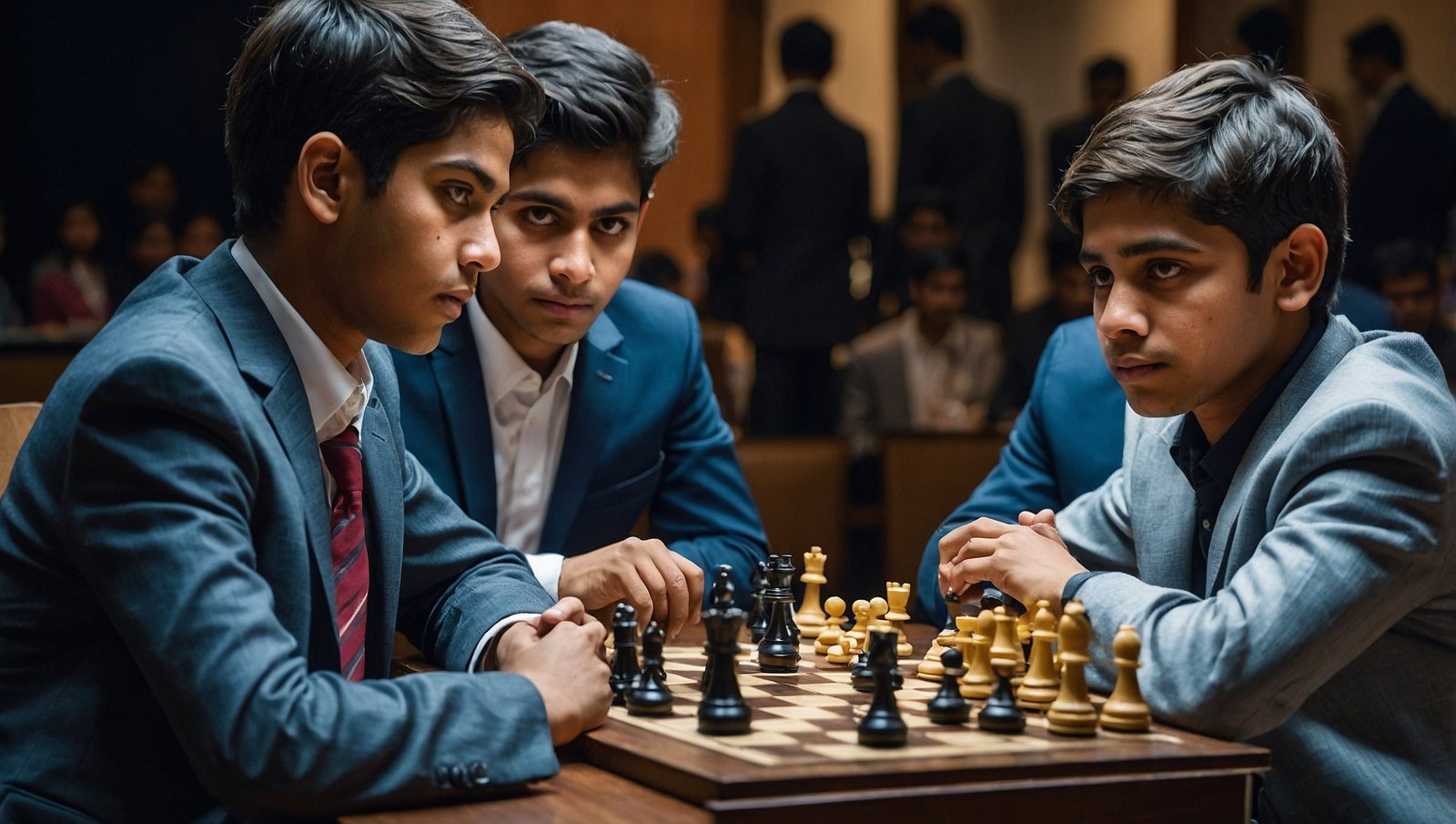Amidst the marvel of chess, India’s whiz kids stay ahead of the world race and strongly plant this country in the position of a chess superpower. Up to January 2, 2025, FIDE rankings show the world a different picture never seen before, where Indian players cover four of the top ten spots in the world, and that is the evidence of a robust chess environment up and the coming of a new generation of talented players.
Damaging the top of the standings is Gukesh Dommaraju, a 19-year-old who has made it to the second position in the world, closely following the reigning world champion, Magnus Carlsen. Gukesh’s meteors rise, which is consistent with heavy performances in all major tournaments throughout the year. His victory over the Tata Steel Chess Tournament at Wijk aan Zee is a telling time for him to join the world’s best players.
On the heels of him is Rameshbabu Praggnanandhaa, the fifth youngest player in the world, ranking at only 20. The aggressive style and coolness under critical situations of Praggnanandhaa have marked him as an established name in the international circuit. His chess match with Carlsen, which was rapid, a match in which they both agreed to a draw, was the shining moment.
The Indian contingent’s performance sheet is closed out by Arjun Erigaisi and Nihal Sarin, who, with 7th and 9th rankings, respectively, are counted among the top ten. The excellent consistency and maturity they have shown, as opposed to the years they actually are, which enable them to challenge and trounce players with more experience, are highly rated in them. Their sounds in the top section of the world chess are clear testimonies to India’s having a pool of talented players.
The success of these young players in the men’s category is really a breakthrough. In the women’s section, Koneru Humpy and Dronavalli Harika have continued to be the Indian keystones and have kept themselves in the top ten. Besides, the new sensation Divya Deshmukh paced ahead a reasonable distance by securing her first top-20 finish of her career.
This breakthrough accomplishment has been backed by multiple factors, including exposure to competitive chess at an early age, support of the various systems, and inspiration from the previous world champion, Viswanathan Anand. The All India Chess Federation (AICF) has taken a principal part in nurturing talent through various grassroots-level programs and encouraging young kids to play on the international stage.
The AICF Secretary Bharat Singh Chauhan felt elated about the rankings. He commented, “Presently, in Indian chess, it is a grand moment. We are not only nurturing the world stage, but our youngsters are ruling the world, too. This is the result of numerous hours of strategic planning and investment in chess development in every part of the country.”
The proof of this success is wider than simple personal achievements. The chess game is predominantly popular amongst the youth in India, especially in schools, and chess clubs have sprung up almost everywhere in the country. The top brass has also taken good care of this thing, so they have released a more significant portion of funds to support the chess programs and have even declared the sport a priority.
As the youth of India continue to advocate for the world stage, the future of Indian chess appears brighter than ever. With the World Chess Championship knocking on the door, there is a rising hope that a titled player from India will win the world championship, which could create a new era in the country’s chess history.ShareRewrite









